Day 1 – Arrival in Addis Ababa - Capital of Ethiopia
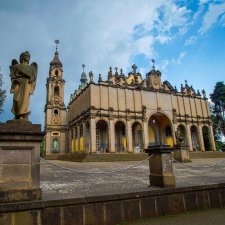
Welcome to Ethiopia! You’ll be stepping off the plane into Africa’s fourth largest city and diplomatic capital, Addis Ababa. Your Yared Tour & Travel guide will be there to meet you at Bole International Airport and drive you to your hotel.
The direct translation of Addis Ababa is ‘new’ ‘flower’ and you are likely to find this rapidly growing city a fascinating place full of contrasts between traditional and modern Ethiopia, making it a great starting point for your tour.
Day 2: City tour Addis Abeba
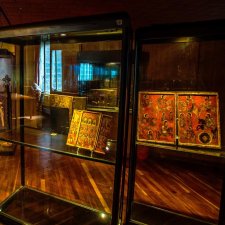
Today begins with a drive to Entoto Mountain where we visit the historical site of Emperor Menelik’s Palace and Maryam church, the oldest in Addis Ababa. From here we drive through Shiro Meda which hosts the city’s largest market for traditional clothing, continuing to the campus of Addis Ababa University, home to one of Africa’s best Ethnological museums and the former palace of Emperor Haile Selassie. You visit the Ethnological or Ethiopia's National Museum with ‘Lucy’, the world-famous fossilized hominid. The museum also showcases ancient artefacts from Axum and Gondar, and an exhibition of Ethiopian art. Then visit the Holy Trinity Cathedral (built in 1933), the largest Orthodox church in Ethiopia and the final resting place of Haile Selassie. To conclude, you will visit the busy life of traders in Mercato - Africa’s biggest outdoor market.
Dag 3 - Fly to Mekele
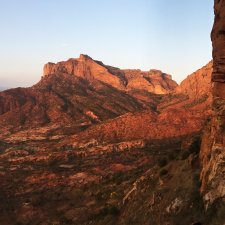
Today you will fly to Mekele and continue driving through the Tigray region. This extraordinary landscape hides a secret that was only discovered in 1966 when a Catholic priest from Adigrat revealed the existence of at least 123 rock-hewn churches in the area, of which more than 20 are in Gheralta. Many of the churches are built on high plateaus, hidden in caves and only partially separated from the host rocks. Their walls are often covered in artistic, colourful murals. Some can only be reached by difficult climbing routes although there are plenty to admire from easier pathways. Two of the most beautiful churches, with impressive locations and great views are the Debre Maryam Korkor church and the Abuna Yemata Guh church. To see is to believe!
Day 4 - Drive to Axum
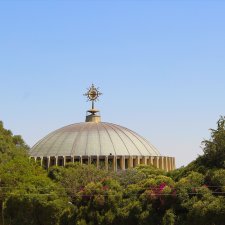
Our next destination is Axum, the historic capital of the Axumite Empire located at the base of the Adwa mountains in the far north of the country, Tigray region. The ancient kingdom was once an important meeting point of cultural and commercial interests, home to the Queen of Sheba during the 10th century BC and has a legendary and mysterious heritage. To reach Axum, we drive on a long and impressive route following the edge of the Simien Mountains passing through the gorge of the Takeze river, and small towns with traditional stone farmhouses typical of the Tigrian countryside.
Day 5 - Archeological city Axum
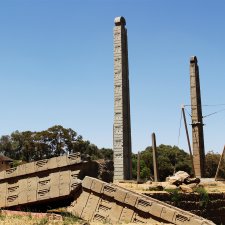
Today we visit ‘The Stelae Field’, an active UNESCO archaeological site containing several enormous, symbolic obelisks sculpted from granite, which are believed to have served as monuments to the Empire’s Kings, some 1,700 years old. The largest obelisk stands at 24m high. We learn more about the ancient civilisation, excavations and research findings at the Archaeological museum, whilst local legends will be brought to life for you with stories from a trained local guide.
Day 6 - The Simien Mountains
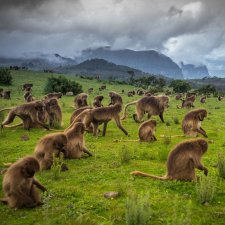
In the morning we drive through the Ethiopian Highlands to the ‘Roof of Africa’, The Simien Mountains. Here you will soak in breath-taking views of a truly unique mountain landscape formed from countless volcanic lava outpourings between 25-40 million years ago. Despite their rugged harshness and high altitude, the mountains are full of life; thousands of plant species and different wildlife inhabit the land such as the special gelada monkey, the walia ibex, the Ethiopian wolf, antelopes, jackals, bushbucks, and even large cats such as leopards, various birds of prey, but also isolated local communities.
Day 7 - Hike in Simien Mountains
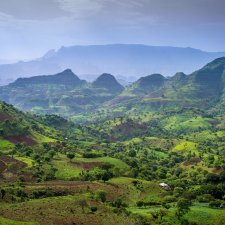
In the Simien Mountains you will soak in breath-taking views of a truly unique mountain landscape formed from countless volcanic lava outpourings between 25-40 million years ago. Despite their rugged harshness and high altitude, the mountains are full of life; thousands of plant species and different wildlife inhabit the land such as the special gelada monkey, the walia ibex, the Ethiopian wolf, antelopes, jackals, bushbucks, various birds of prey and also isolated local communities. During a daytrek, you’ll walk on centuries-old pathways connecting villages with grazing lands and learn about the history of Simien’s inhabitants, take in more spectacular views and have fantastic opportunities to observe wildlife. The car can pick you up in different parts of the park, depending on your interest and how far you’d like to walk.
Day 8 - Fasilides' Gondar
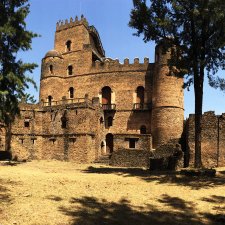
We take the full morning to learn about the Kings and Emperors of Ethiopia and discover all the best of World Heritage Site Gondar. During a guided tour, we visit some of the oldest and most impressive buildings dating back to the 17th century and Fasilides’ time; the Royal Enclosure, a 70,000 sq/m compound contains the remains of several royal buildings; Fasilides’ castle, Iyasu’s palace, Dawit’s Hall, a banqueting hall, stables, Empress Mentewab’s castle, a chancellery, library and three churches. Near the city lies Fasilides’ ancient bathhouse, home to an annual ceremony where it is blessed and then opened for bathing, and finally Debre Berhan Selassie church, said to be one of the most beautiful and well-preserved in the country. Then we drive to Simien Mountains.
Day 9 - Awra Amba & Bahir Dar
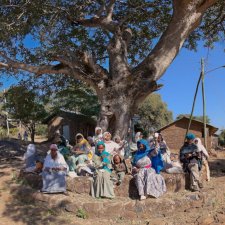
On the road between Bahir Dar, Gondar and Lalibela we’ll be stopping off to visit a village like no other in Ethiopia. The special community of Awra Amba is a thriving egalitarian society where residents believe in gender-equality, shared responsibility, hard work and education. The village was founded in 1972 on the vision of a young farmer named Zumra and a small group of like-minded friends. Today, Awra Amba has successfully evolved into a self-sustaining community, independent of food aid and religious funding. Residents run a weaving social enterprise and profits are invested into community services such as a local library and retirement home. You’ll have the chance to visit the village. We are then heading to the capital of the Amhara region and one of Ethiopia’s most popular highland cities, which is Bahir Dar. The rest of the day is free time.
Day 10 - Lake Tana & falls
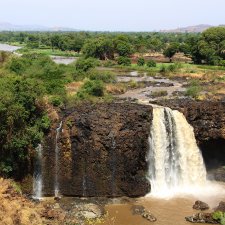
Bahir Dar is the big city in north-western Ethiopia. Around 30km south of Bahir Dar and Lake Tana we visit the Blue Nile Falls. It’s immense power and beauty is known locally as ‘tis abay’ meaning ‘great smoke’. The best time of year to see the falls is during the wetter months. To reach the most beautiful viewpoint, we take a gentle stroll for around 1½ hours. Lake Tana, source of the Blue Nile, is Ethiopia’s largest lake and an absolute delight to explore. We’ll be taking a boat ride to the lake’s peninsula visiting two picturesque church monasteries dating back to the 13th & 14th centuries. You’ll have a chance to explore the monasteries, see the colourful murals of Christian saints and martyrs adoring their walls and hear stories about the remains of ancient Ethiopian Emperors and treasures of the Ethiopian Orthodox Church.
Day 11 - Drive to Lalibela
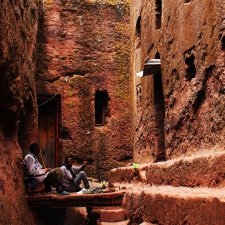
We’ve saved the best of your Ethiopia tour until last, the world wonder of Lalibela. In this magical, cobblestone town, you can view no less than thirteen beautiful medieval churches. Lalibela’s churches have also been carved out of rocks, like Tigray’s, but they sit below ground level, some connected by narrow passages. It is believed the churches were built for King Lalibela, with the help of angels (as the legend tells), whose vision was to create a ‘new Jerusalem’ for Christian Ethiopians during the 13th century.
After a long journey, you’ll soak up more of the jovial atmosphere and traditional nightlife at a local bar whilst enjoying Asmari performances, Ethiopia’s version of stand-up comedy. And of course, you will have the chance to taste Lalibela’s delicious local honey wine and enjoy more good Ethiopian food.
Day 12: Churches of Lalibela
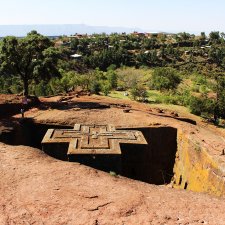
Today you explore the mystical rock-hewn churches of Lalibela, that are organised into two groups. The northern group consists of six churches including Bet Medhane Alem, the largest of all Lalibela churches which has the shape of a Greek temple. Bet Maryam, dedicated to Maria has a bath which is said to have wonderful healing properties. Other churches are Bet Meskal, Bet Danaghel, and the interconnected churches of Bet Golgotha and Bet Mika'el.
The southern group consists of four churches including Bet Amanuel which is praised by art historians for its beautifully decorated exterior walls. Bet Abba Libanos, has a structure of great charm, and Bet Gabriel-Rufael.Last but not least you visit the remarkable church of Bet Giyorgis, carved into a cross shape and perhaps the most elegant of all in Lalibela.
Day 13 - Relax in Addis Abeba & back home
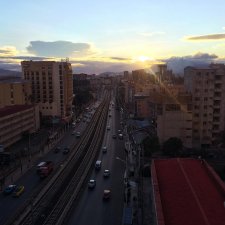
Today we head back to Addis Ababa by plane. You could shop or make a single final visit in the capital in the afternoon. Or you take a rest in your dayroom in Addis Ababa. On the final day you will enjoy a farewell meal and celebration in one of the city’s cultural restaurants. Enjoy the authentic Ethiopian cuisine for the last time, whilst enjoying traditional dance and music.